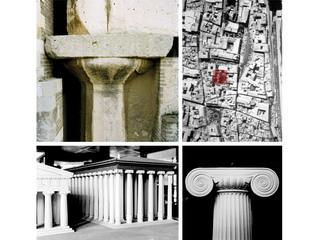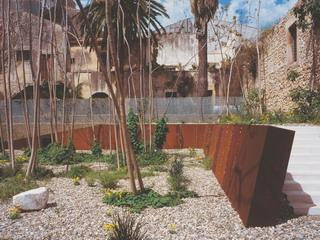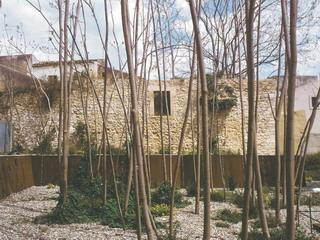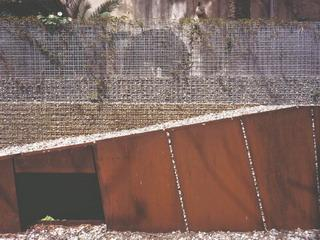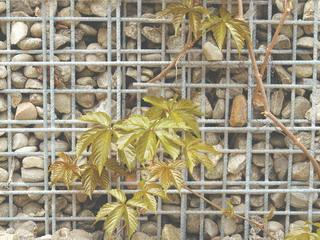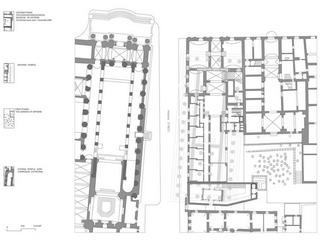The Garden of Artemis
For more than half a century the Ionic Temple of Artemis in Syracuse has played the role of silent counterpart to the adjoinng Doric temple - the Athenaion which was converted into a Christian basilica in the 6th century AD, and the later into a sensual Baroque cathedral. Long buried under the foundations of a modern building and rediscovered during excavations in the 60s, the temple of Artemis is one of the subterranean wonders of the original acropolis of Ortigia, whose medieval alterations; reconstruction after the 1963 earthquake; and the building of the Palazzo del Senato in the 17th century, have slowly trasformed into a densely layered archaeological palimpsest.
Since the new local government office building was not fully completed, Vincenzo Latina has used a gap in the internal surface of the tightly-woven urban fabric of the block containing the Palazzo del Senato as the startng point for a rewritig of the site. Adopting the dig-and-recompose method he successfully used in the nearby Bottari court (see Abitare, Novembre 2002), Latina took the existing array of elements the shaky masonrywork, vegetation run wild, hotel left behind after earlier digs, lines of walls, medieval remains and made from it a written page whose accumulated lacunae act as speaking presences rather than silent absences.
By steering archeological protocol in the life-enhancing direction of historical memory and mythological imagery, the intervention becomes an affectionate offering to the iconography of Artemis, the goddess of hunting, woods and nymphs represented here in the evocative image of one of those cool, shady places so fondly remembered by travellers like Schinkel and von Klenze who were the first to see the panorama of ancient ruins as an evocative hyper-landscape in which art and nature lovingly embrace.
A gurgling fountain set in a monolithic millstone evokes the sweet fountains of Ortigia; heavy stainless steel bands hold and contain the differences in level, drawing attention to successive waves of construction and conferring on the passage of history the permeable appearance of a metal crevice; and finally, steel panels and trellises set loving traps for the local flora to run wild on with controlled spontaneity.
Intended as a waiting area and place of meditation for the planned entry pavillon to the temple excavations, the Garden of Artemis has the Neo-Gothic grace of a picturesque micro-landscape where fragments of time are offered the chance of a second life, no longer entombed in dank oblivion but reinstated as the affective focus of a rediscovered identity.

